Like slow fashion and local farming, sustainable interior design came on the scene as somewhat of a trend nearly a decade ago. But if the sheer number of eco-conscious design companies, products, and materials is any indication, this interest is more than just a passing fad.
Thanks to this collective, societal priority shift, you can now find a sustainable version of anything and everything in the home space, from bedding and furniture to cleaning supplies and basic plumbing. Slowly but surely, caring about the planet on a personal and even creative level is going mainstream.
If you’ve joined the cause among countless others, we’re here to help. Ahead, find 27 ways to make your home more sustainable, courtesy of Havenly interior designers.
Sustainable Interior Design: General Tips
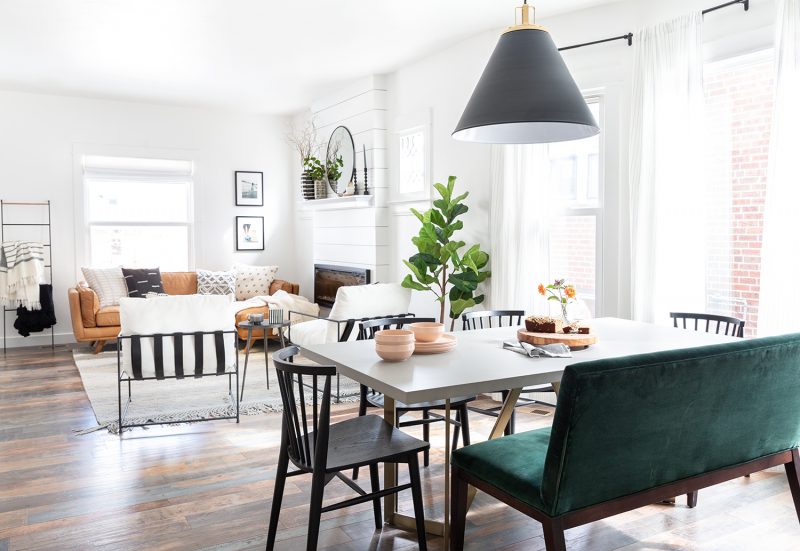
1. Shop your own home. Repurpose items you already own and try to find new uses for your current decor and furniture. Let your creativity run wild.
2. Shop sustainable home brands. We love Burrow, Etsy, Chairish, and more — see the full list here!
3. Be diligent with your thermostat. Turn it thermostat down in the winter, up in the summer, and layer throw blankets throughout your home so there’s always something to wrap up in.
4. Swap conventional light bulbs for LED bulbs or CFLs. Talk about a powerful reduction in energy: LEDs and CFLs (compact fluorescent lamps) are up to 80 percent more energy-efficient than traditional bulbs — and they last up to 10 times as long. Bonus: they now come in a wide range of hues for warmer ambiance instead of the harsh white tone.
5. Shop vintage and local. When making a new purchase, consider thrift stores and local shops first. You can repurpose existing furniture and decor instead of buying new while reducing your shipping waste and carbon footprint. Plus, you really can’t beat vintage furniture and funky lighting (think Marcel Breuer chairs).
6. Go green with your cleaning products. We’re big fans of the cult designer brand Blueland for its eco-conscious approach to reusable packaging.
7. Plants, plants, plants! Houseplants look great, naturally purify the air sans harsh chemicals, and serve as a healthy hobby. You can’t go wrong!
8. Turn off lights when you leave the room. We love a wireless remote control to make turning off multiple lamps as easy as humanly possible.
9. Declutter responsibly. That means being mindful of what goes straight to a landfill. Donate what you can to a local thrift store, recycle paper and plastic goods, and dispose of hazardous household products, such as paint and batteries, at your local drop-off site. Earth 911 is an amazing resource for discovering recycling options in your zip code.
In the Living Room

10. Add black-out curtains. These shades, specifically with thermal insulation benefits, help maintain a lower heat and air conditioning footprint.
11. Shop for the long haul. When buying big-ticket items like sectionals, sofas, dining tables, and the like, keep longevity in mind. While there’s a time and a place for IKEA, investing in quality pieces that you’ll use for 10-plus years cuts down on furniture waste. You can also consider sustainable, clean furniture from brands like Floyd and Sabai Design.
12. Save your candles. Once you’ve burned down your favorite candle, save the vessel and repurpose it as a storage catch-all or cute plant pot.
13. Nix overhead lighting. Adding a few lamps in lieu of overhead lighting is a tried-and-true designer trick — it makes for excellent ambiance and saves energy.
14. Embrace dried florals While nothing beats fresh cut flowers on special occasions, dried options last longer and cut waste. Plus, they’re super cute — we love dried jasmine, bunny tails, pampas grass, and more.
In the Kitchen
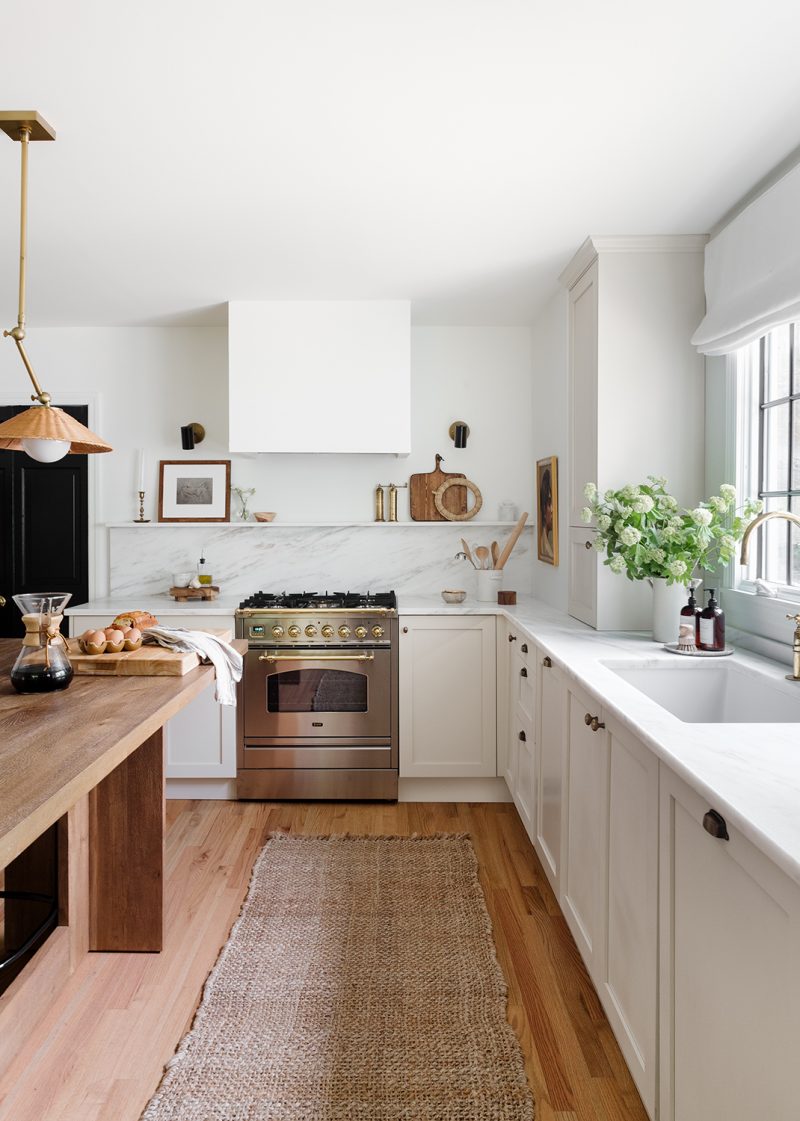
15. Rethink your morning coffee. Pod-based coffee machines generate a lot of waste. Something like a French press, on the other hand, is more eco-conscious and often produces a tastier brew.
16. Dish towels over paper towel. Stash a bucket with dishcloths underneath your sink for everyday drying and cleaning, and you’ll avoid wasteful paper towel altogether.
17. Invest in reusable storage. Sustainable glass Tupperware and pretty-looking reusable bags like Stasher will not only give your fridge a makeover, they help cut down the never-ending churn of single-use plastic.
18. Repurpose used jars. Pickle, pasta sauce, and jam jars can all be used for additional food storage. Or, remove the wrappers and turn them into homespun vases!
In the Dining Room
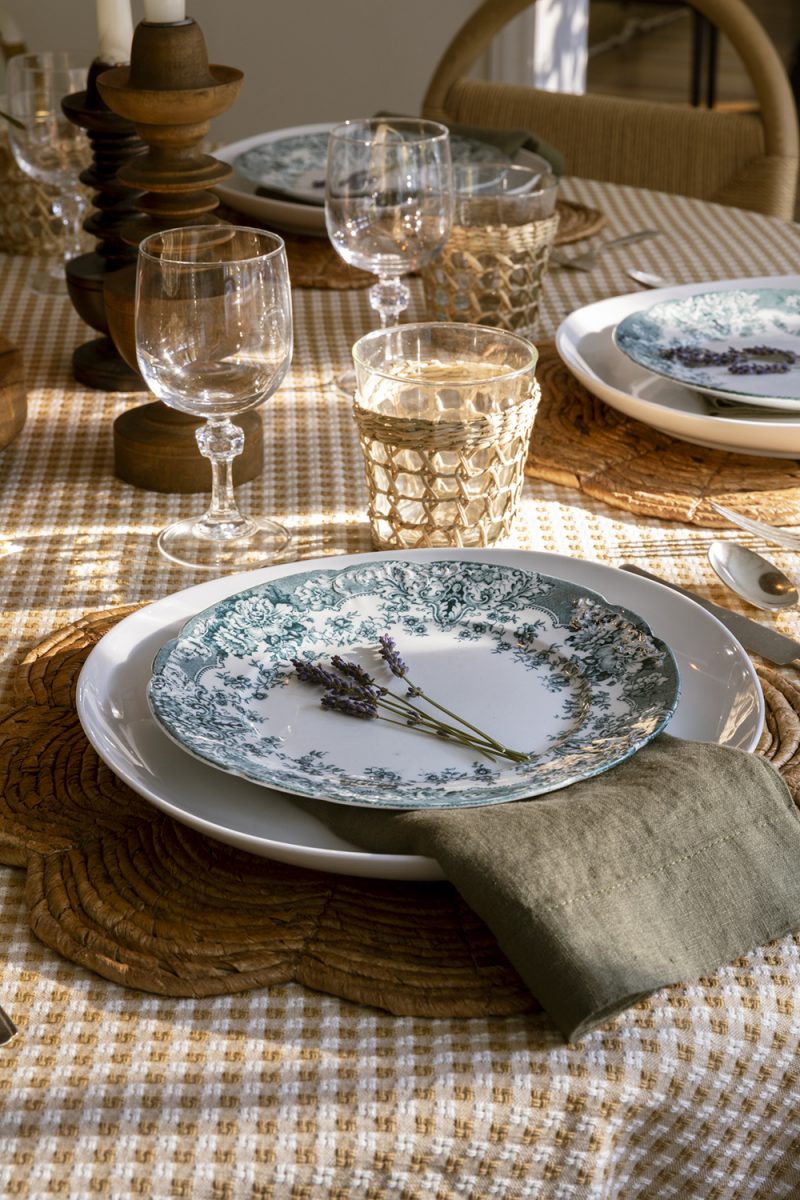
19. Use cloth napkins. Disposable napkins only add to overall waste while cloth napkins beautify any tablescape. It’s one of the easiest ways to reduce waste in your dining room.
21. Use hand-me-down dinnerware. Instead of always buying new, make use of heirloom china, thrifted dinnerware, or locally-purchased plates and bowls to cut down on product churn.
22. Cut down on tablescape decor. Instead of buying seldom-used table decor for every holiday, raid your spice cabinet, backyard, or farmer’s market for natural accents. Apples, peaches, pears, lemons, oranges, pinecones, tree branches, cinnamon sticks, dried flowers, and lavender, olive tree, or chive sprigs look beautiful and can all be eaten, repurposed, or tossed back into the yard post-party.
In the Bedroom
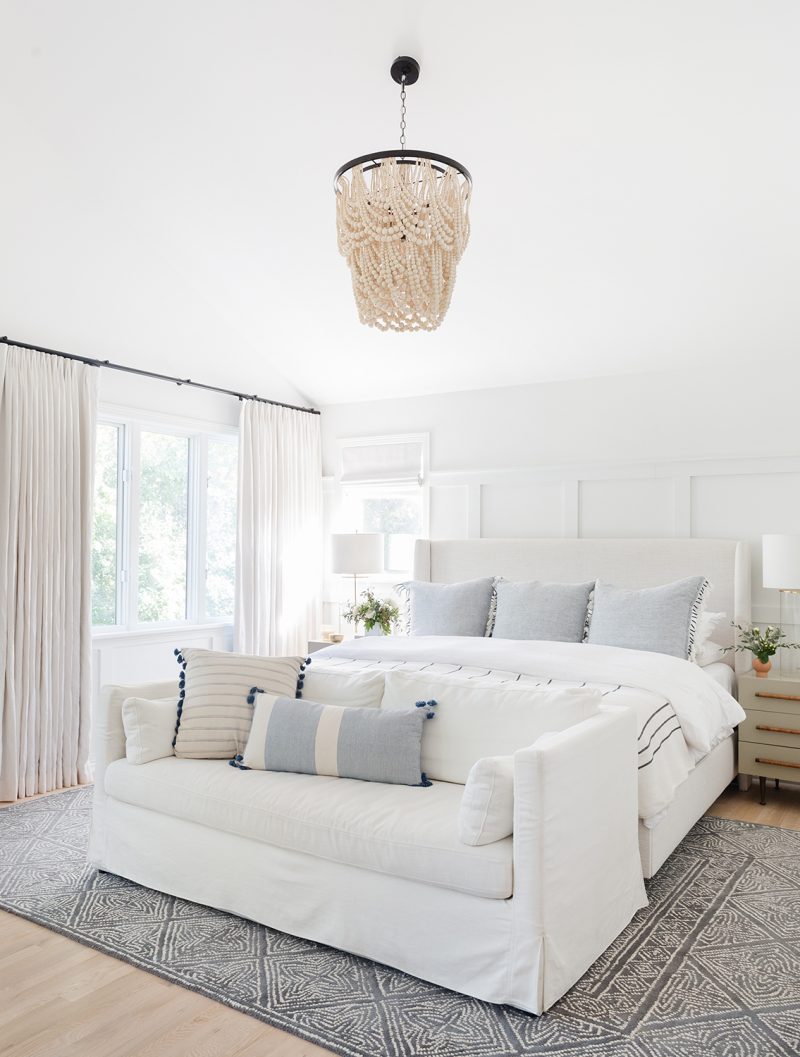
23. Thrift your big-ticket items. Vintage dressers, antique lamps and inherited textiles (like handmade quilts or crocheted throws) add a unique touch your bedroom. Most importantly, these pre-owned, gently used items are also sustainable.
24. Upgrade your sheets. Consider a sustainable option, like eco-friendly cotton, linen, or bamboo sheets. They may cost a bit more, but they’re beautiful, comfy, high-quality, and better for the planet.
25. Rethink your wardrobe. Do a deep edit and donate items you no longer wear. When buying new, try to avoid fast fashion and shop for the long-haul: timeless, high-quality, versatile.
In the Bathroom
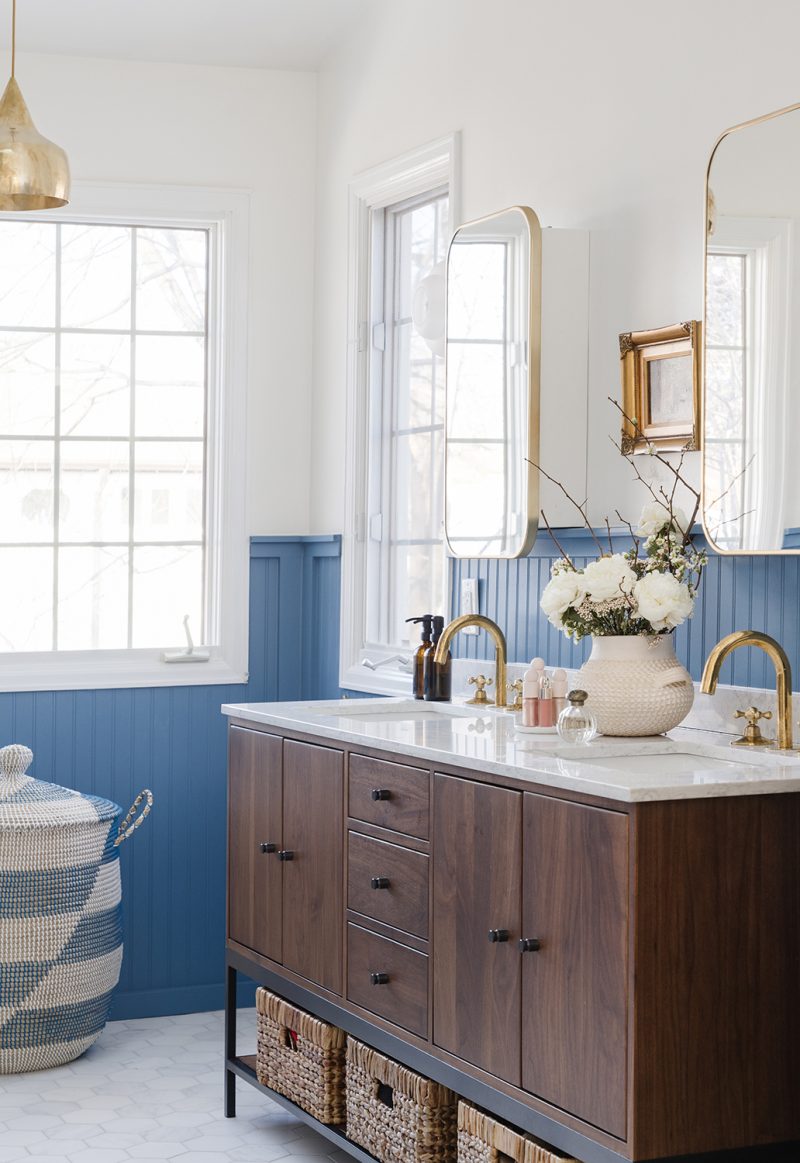
26. Revamp your plumbing. Install low-flow toilets, sink and bathtub faucets as well as water-efficient showerheads. These new innovations use up to 40 percent less water than traditional plumbing and will drastically cut down water consumption (and your utility bill).
27. Soap swap. Bars of soap look more organic and polished (especially when housed in a cute ceramic tray), and cut down on packaging waste. If you’re a pump family, buy refillable soap dispensers instead of single-use plastic.
From sustainable interior design swaps to perfecting room flow, our designers are chock-full of expert tips. Check out our design packages to work with a design pro one-on-one.

